This time, my news aren´t that good … well, it kind of fits the current worldwide mood, I guess. For some it may come as a surprise, for others it may not. Some of you may be laughing at me, some will be relieved. Days ago I started to personally update my family and friends about my decision to postpone the #atlanticloop-project and most of them reacted lovely. Skilled sailors, who´s opinion I consider deer and valuable, congratulated me to that decision and expressed their joy of being unburdened. Well, no matter how you, dear reader, react, this article is meant to explain why I decided this way.

First of all, let me clarify my intentions – and this is valid for the whole NO FRILLS SAILING.com-project: I do not do this for money. I am not a professional editor or writer, this is my spare time and I only do maintain this blog for the fun of it. In this, I invite you to accompany me on my journeys, be it sailing trips, the refurbishing/updating efforts on my boats or – here we are – my plans. In this, I do not have any liability to “function” or pull things off. I don’t get paid or earn a single Cent with this. That being said, let me explain what has happened during the past weeks and months.
Life is a constant Flow …
This is really how I see life. You proceed, you gather information, you think about it, process it and then make a decision. You are constantly developing. We are evolutionary beings. We re-think, we re-assess and constantly receive more information, leading to new decisions. This is how it has always been. Some may find this enervating, I accepted it as it is: In reality, things are constantly changing. And so are plans. As simple as that: This is what has happened to my plans to cross the Atlantic Ocean and do a “loop” alone in my sailboat, sail onwards North to beloved New York City and bring the boat back to Europe via the Northern route.

I worked a lot the past months on this project. Literally on my own boat to outfit her for this voyage, but also by reading lots of books, talking to various people who already had done the voyage and have an intimate knowledge of these sailing areas. I gathered a lot of valuable information, processed it and re-thought my plans. In the end I reached a point where the gain of the project had been outdone by the risk. With the lever tilting over, there was only one decision to make: I am not going to do it. At least for now. This does not come as a shock to me neither do I see it as a failure. To the contrary: This decision is a wise one and I am happy to having made it. Why? Because if one door closes another will open up. But that´s for later. Just let´s dive deeper into the reasons for cancelling the project.
A Boat, not really made for this
The first – and for some most obvious – reason is the boat itself. The First 27 SE (aka Seascape 27) is a very capable and powerful performer indeed. She is a CE Category B-rated boat which means unlimited offshore sailing in waves of significant height of up to 4 metres. I am sure, also reassured by the makers of the boat, that GEKKO would have accomplished the trade wind route to the Caribbean without any problems. But … well, but, she is too small!
 At a length of just barely 8 metres and a planning-optimized hull, meaning a volume-less interior, she is just not made for long haul sailing trips. As much as I love her cruising capabilities and the wonderful feeling of being freed from the overload of classic cruising yachts, it was not without thought that I created the term #microcruising. And this word consists of “cruising” and “micro”. Micro means tiny. And with her size do come a lot of downsides too, which, in total, sum up to making this boat inappropriate for a journey like the completion of the Atlantic Loop.
At a length of just barely 8 metres and a planning-optimized hull, meaning a volume-less interior, she is just not made for long haul sailing trips. As much as I love her cruising capabilities and the wonderful feeling of being freed from the overload of classic cruising yachts, it was not without thought that I created the term #microcruising. And this word consists of “cruising” and “micro”. Micro means tiny. And with her size do come a lot of downsides too, which, in total, sum up to making this boat inappropriate for a journey like the completion of the Atlantic Loop.
Stowage, provisions and (two) safety margin(s)
With the small size, obviously, a second crew member is a no-go from the first. That said, I would have had to sail single handed for the whole time. Why? Because people need food and need to have something to drink. I do have a lot of experience in provisioning a boat´s galley for longer trips. In this, I know very good how much food a person needs per day. By the way, in my “former life” I used to be a semi-pro race bike athlete and Marathon runner. In this I can calculate the calorific demand of a human body per day. It was a pretty exciting and fairly easy calculation.
 That was, for the first leg from the Canaries to the Caribbean for example the following equation: One breakfast, one lunch and one dinner per day plus snacks and sweets. Times 20, which was slowest time according to my routing. Checking various sources I then added a 5-day-margin, which would help to bridge a calm, a storm-detour or being adrift due to technical problems. Makes 25 rations. Talking and checking about Corona-implications, I would have to add another 10 day margin if I´d be forced to stay at quarantine anchorage. That´s 35 full day rations meaning over 100 meals! And we haven´t even talked about fresh water!
That was, for the first leg from the Canaries to the Caribbean for example the following equation: One breakfast, one lunch and one dinner per day plus snacks and sweets. Times 20, which was slowest time according to my routing. Checking various sources I then added a 5-day-margin, which would help to bridge a calm, a storm-detour or being adrift due to technical problems. Makes 25 rations. Talking and checking about Corona-implications, I would have to add another 10 day margin if I´d be forced to stay at quarantine anchorage. That´s 35 full day rations meaning over 100 meals! And we haven´t even talked about fresh water!
 A widely accepted guide value for water demand is 35 milliliters of water per kilogram weight. For myself that´s 2.5 liters per day. Add at least – minimum! – half a liter per day for washing, personal hygiene and so forth we have 3 liters per day. All in all, I´d had to stow away 105 liters of fresh water, that´s 20 big 5 liter-gallons. Remember, on our #swedensailing trip we bought just six of them for a “real” yacht. Let me put it this way: There is just no way I could ever store food and water for 35 days on GEKKO, let alone double this amount for a second crew member! Just impossible.
A widely accepted guide value for water demand is 35 milliliters of water per kilogram weight. For myself that´s 2.5 liters per day. Add at least – minimum! – half a liter per day for washing, personal hygiene and so forth we have 3 liters per day. All in all, I´d had to stow away 105 liters of fresh water, that´s 20 big 5 liter-gallons. Remember, on our #swedensailing trip we bought just six of them for a “real” yacht. Let me put it this way: There is just no way I could ever store food and water for 35 days on GEKKO, let alone double this amount for a second crew member! Just impossible.
The problems with the second leg
But, for a moment, let´s assume I would have been able to overcome these problems. Maybe I would have fitted a water maker to save some space. Maybe I would have found a supplier or sponsor to grant me dry-fried food, condensed in mini-packages that save so much volume. Maybe, well, probably this issue is one that can be solved. Next problem up on the table was the second leg. First leg – to the Caribbean – was okay for me and got a thumbs up. I found a nice boat service on Saint Marten to store my boat over Hurricane season and from a budgetary side it looked all good. So I began research for the second leg, planned for the year 2023, sailing up North to New York City.

Well, essentially, there are three routes to take. First one is all along the US American East coast, passing Florida and up North, Charleston, Cape Hatteras, Norfolk, New York City. Secondly, inland, following the Intracoastal Waterway, a route many of my friends chose. And third, more to my liking, the offshore-route. Heading to the Bermuda Islands, straight up way, way off-shore. So, here´s the thing. All of them three aren´t really practical for my boat. First, the coastal trip: With prevailing winds, quite a good chunk of currents and the fact that – especially landward – low pressure weather systems may occur the farther North I get, combined with the fact that this area is full of commercial, fishing and pleasure traffic makes it extremely risky for a small boat like mine sailed single handedly. And we haven´t even talked about the perils of the notorious Cape Hatteras!
Second route, the ICW. Well, it might have its charm and I totally see why people love it. But for two reasons I just don’t want to do it this way. First technical: My boat is all-electric. That means, at a significant speed of let´s say 5 knots over ground the battery will last 5-6 hours at best. So, effectively, I would have to make sure to be in a marina or at least at a mooring with shore power connection. All the way up the Intracoastal Waterway! That´s a lot of logistical planning ahead and prolonging the journey. Needless to say, as much as I like inshore travel, I do not fly around the world to do a three-week canal trip. I am a sailor …

Which brings us to the route I finally found most attractive. Possibly the fastest and most logical one: Bermuda and straight on to Lady Liberty. But here´s the thing: Even if the first leg – some 850 nautical miles – from the Caribbean to Bermuda might be fun, its a good prbability that this will be an upwind route. Atlantic waves, upwind in an 8 meter boat … single handed in an area that is frequently used by commercial traffic, transat freighters and tankers? Well, that sounds like loads of stress. Again: No chance for a second crew member. The second leg to New York, however, would be done in Northern Atlantic variable weather conditions. Anything can happen here, from smooth, dream-like sailing to a hellish low pressure system passing. As I have no fear regarding foul weather, I know that a grown-up big-ass North Atlantic storm will – minimum – damage the boat and could possibly inflict even worse. Simple as that: I am a father who wants to see his kids growing up. I won´t risk my life for this. Now, you could argue that a lucky weather window might reduce this risk, but again: I am a working man, I just cannot afford waiting for weeks for a window to open up.
Green, Orange and deep Red
And here´s the greater picture: Whereas the first leg to the Caribbean is greenlit, I´d consider the second leg to New York at least orange. Maybe, with good planning and a pretty flexible time schedule, a smooth and safe passage can be assured and mastered. Maybe I can arrive to New York in my small boat without problems, there´s still a significant risk of being hit by severe weather and sea conditions. But, that aside, let´s assume I´ll make it to New York – most certainly, leg 3, back to Europe again, is absolutely redlit.
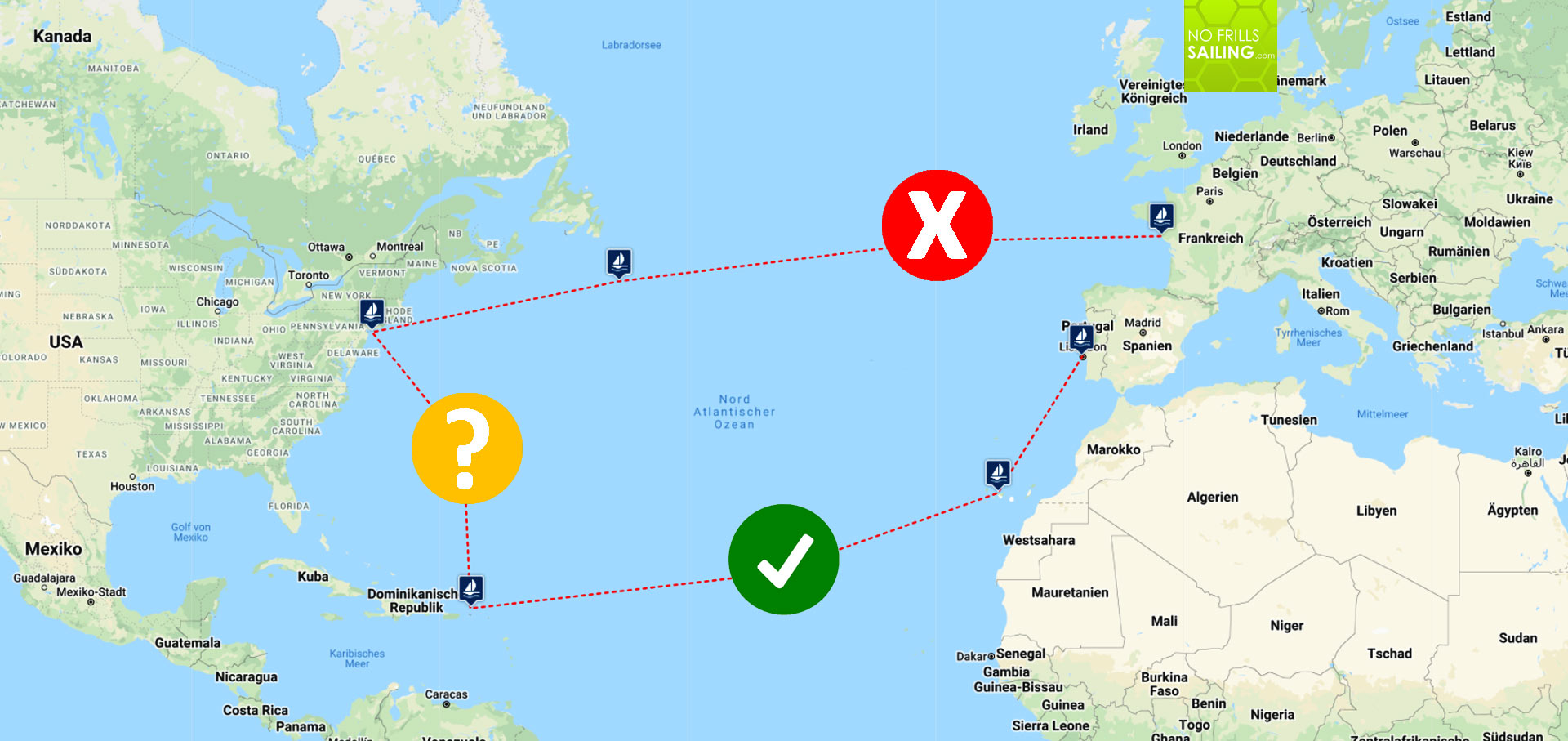
Why? Well, the Northern Route is a hell of a ride. You´ll have to go way up North to catch good winds. The chance of being overtaken by a weather system is nearly 100 percent and that with almost full certainty means storm! Apart from the fact that there is no chance to mount a sprayhood, let alone a dodger, to GEKKO, sailing this route is an absolute no-go for me! So, as of now, the Atlantic-Loop suddenly is just a crossing with a maybe-hook. Not what I originally had wanted, not what the little boy that was me some 30 years ago had dreamed of. It simply wouldn´t be what I wanted.
230 Volt in a 110 Volt-land
Again, let´s assume I´d be okay with an “Atlantik Hook” to New York, even more problems come up. How to end this voyage? There are two ways: Bring back the boat via transporter ship or just selling it in the United States. Either way, it’s a shitty idea. Transporting a sailboat by means of container ship will cost a fortune. I do not have tens of thousands of Euro or Dollar to do this. If a transport in Europe costs 15.000 to 20.000 Euros, a transat crossing is minimum that same amount, possibly even more. What about selling?
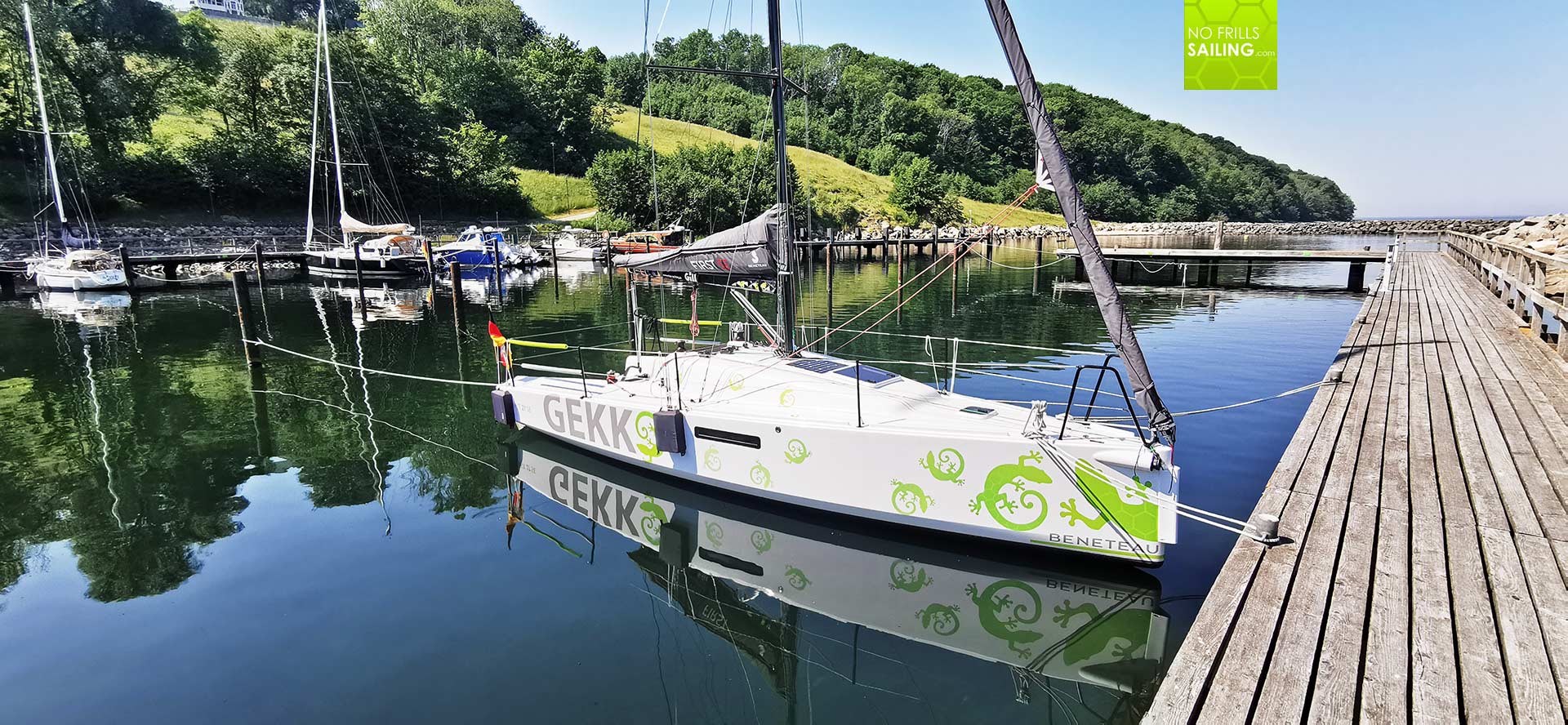
Apart from the fact that I love GEKKO and she is a part of my family, selling the boat in the USA would be a stupid idea. The boat is fitted with electric equipment to meet European standards. That is 230 Volt shore power, battery charger and so forth. There is some re-fitting and new equipment needed to make the boat capable of being sailed in a 110 Volt-land the US is. Either this or I´d have to grant a significant bargain to a possible buyer so that he can fit this. Both is stupid. So, the Atlantic Loop just only does make sense when it is a proper loop and not ending in the US.
The one and only conclusion
These are the big reasons, the main thoughts, which brought me to the conclusion to not tackle this venture with GEKKO. She is just too small, too nimble. She is not made for this. And the Atlantic Loop is not a quick Mini Transat race. That said, I came to decide not to do it. I slept for a few nights over this decision before I opened up myself to a few, very trusted friends. All of them being skilled sailors. All agreed, relieved, rejoiced and encouraged me: “This is the right decision!” So here we are. No #atlanticloop for GEKKO.
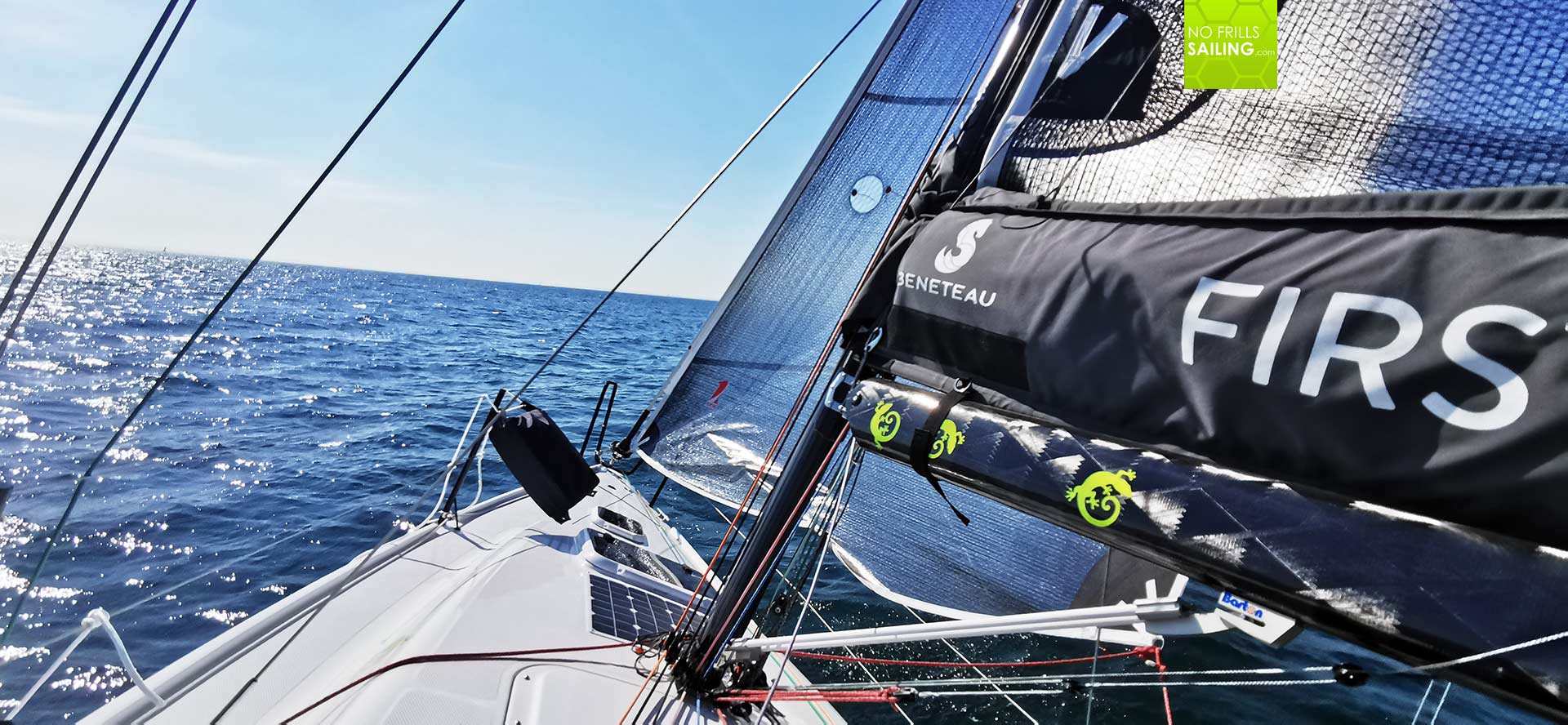
So what am I going to do instead? As I teased at the beginning of this article – and you already know me – I am full of ideas. There seems to be a kind of filing cabinet inside my head that is full of projects, ideas, crazy stuff to pull off. And truth to be said, I indeed have a project that has a similar emotional meaning to me like the Atlantic Loop. I don´t want to fully disclose what this is all about, but let me tell you this: It is a huge sailing trip for which GEKKO seems to be made perfectly. So no technical, logistical or safety-related problems or concerns whatsoever! I have secured a joint venture with a TV-production and we are currently negotiating with a publisher. That being said, you can absolutely expect a great thing to happen if we get thumbs up by our partners – and this is going to be very soon!
Postponed isn´t cancelled …
Together with the excitement of this new, more GEKKO-like, project, I can also say that the Atlantic Loop-idea is neither dead nor will it be postponed for all too long. When I talked to my boss about this, he also was very relieved that I didn´t casted off with the small boat but also kind of regretted it. He is the best boss I ever had and so he came up with an alternative idea and, as part of my regular job with Beneteau dealer Enjoy Yachting, I am currently planning an Atlantic Loop done on a proper, bigger cruising Oceanis as a partially owner/client-event and employee-incentive for our team.
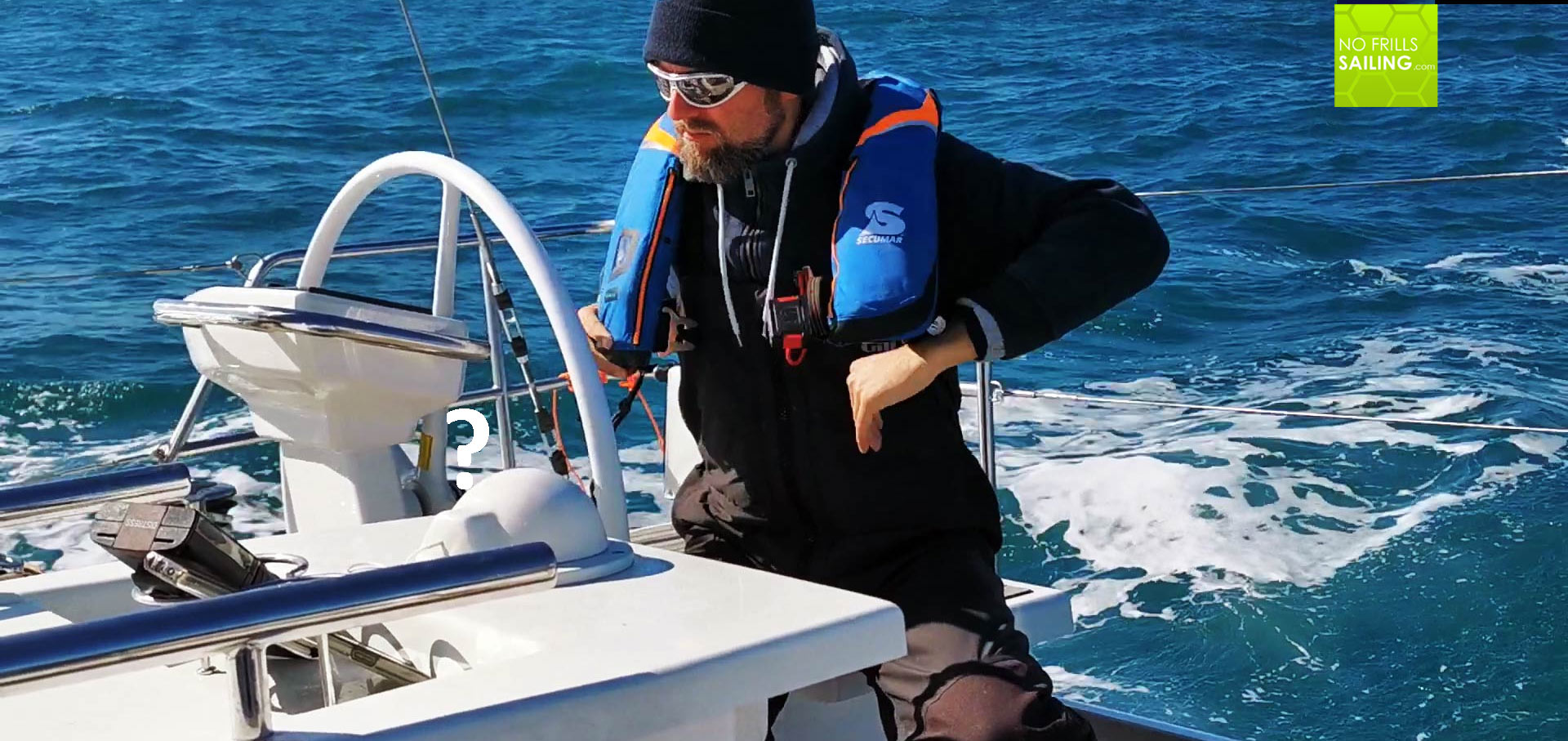
One door closes, another one opens up. In this case, one closed and two opened up. I don´t look back in anger or grief: I started a journey of learnings and these learnings brought me to a conclusion. This conclusion and the knowledge I gained paved the way to new things, new chances and new paths which I wouldn´t have encountered if I hadn´t embarked on the journey in the first place. I am confident and happy, I am looking forward to an exciting sailing session on GEKKO this year – even if the Atlantic Loop may have to wait one or two years more, I know for sure, this is the right thing to do!
(c) Copyright Cape Hatteras picture by Wikipedia
You may also find interesting to read these articles:
Planning my first ever sailing trip
She arrived! Receiving GEKKO
